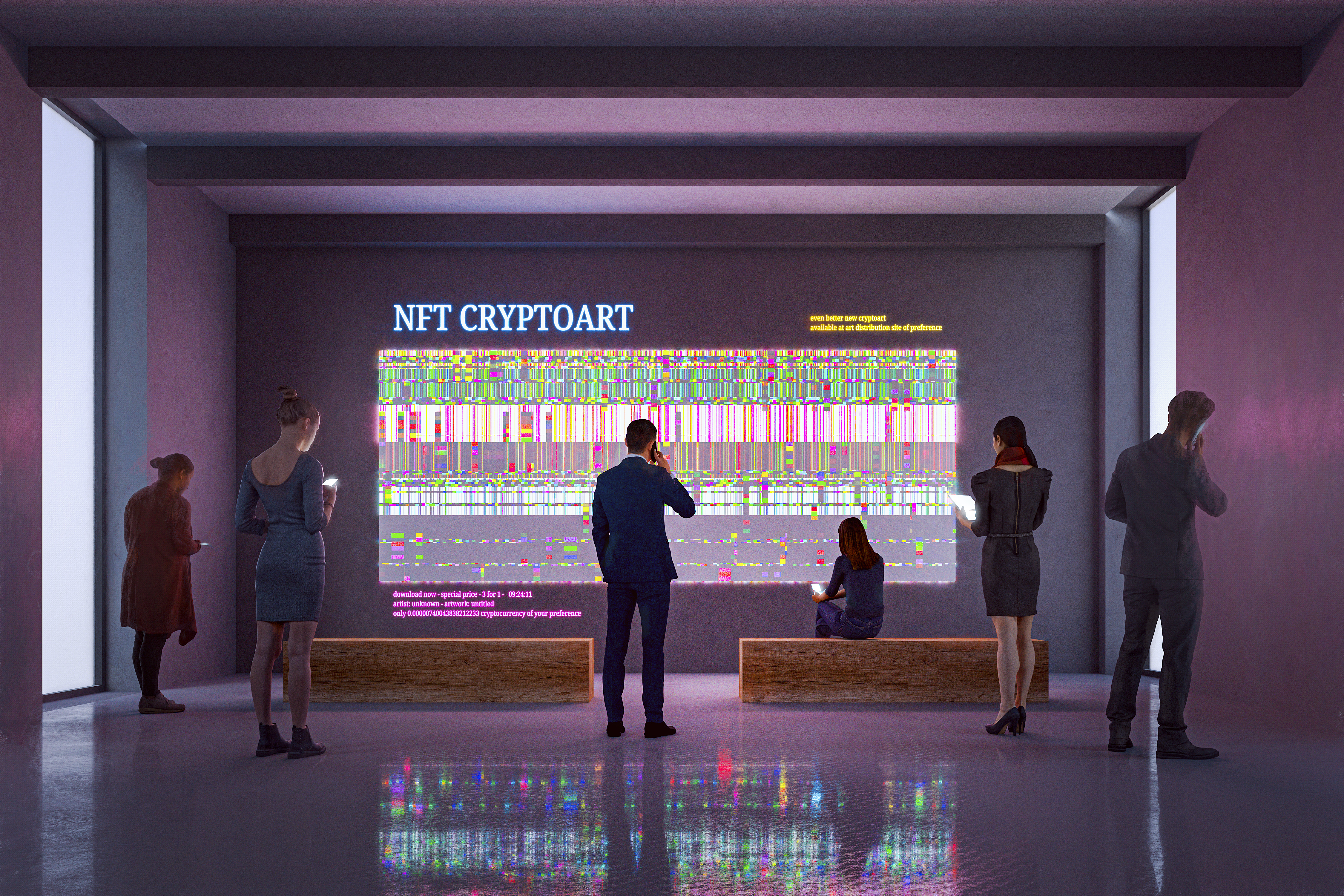Everything

For a millennial who has grown up in an age where the immediacy of knowledge holds untold value, it’s confronting to feel yourself slipping behind. At thirty years old, I’ve already experienced many of the much-hyped signs that my youth is ebbing away. Hangovers last three days, grey hairs populate the side of my head, I care about furniture.
None of these things has worried me in the slightest. I quite fancy the grey.
But one thing I simply cannot come to terms with is becoming the kind of person who no longer stumbles naturally across important news on the internet. For as long as the internet has existed, I have prided myself on being an early adopter, a curious digital explorer.
I can still vividly recall trying to explain Bitcoin to my father while his eyes slowly glazed over.
And yet, in the last few months, it is my eyes that have glazed. It seemed like every second person I knew was talking about NFTs, and I had no idea what they were.
An internal pride refused to let me Google: What are NFTs? believing this be to the first admission that my time was up.
Eventually, my desire to know what an NFT was outweighed my wounded pride, and I succumbed. Since then, I’ve now educated myself on NFTs, but to save you the embarrassment I had to endure, here is a conversation with myself about the internet’s latest blockchain technology.
What does NFT stand for?
Non-fungible token.
Sure. But what is an NFT?
Non-fungible tokens are the newest form of cryptocurrency which operate and are traded on the open-source blockchain market. Unlike Bitcoin or Ethereum, NFTs are single-use digital objects whose value stems from the fact they are one-offs.
So they’re collectibles?
Pretty much, actually. Crypto-collectibles. Digital items that cannot be replaced or replicated, so to own one is to own all.
Why are they so popular right now?
NFTs are having a moment, thanks to a few high profile transactions. Jack Dorsey (you know, the CEO of Twitter) auctioned off his first-ever Tweet as an NFT. Fetched a cool USD 2.9 million.
Jack Dorsey’s first tweet fetched $2.9 million in an NFT Sale—and he donated proceeds to charity https://t.co/UPX8azShoQ by @rachsandl pic.twitter.com/t96VedtB83
— Forbes (@Forbes) March 22, 2021
The musician Grimes (aka the mother of little X Æ A-Xii) sold her digital art collection for $7,500 a piece, totalling $6 million in sales. Rapper Azealia Banks recorded an audiotape of herself having sex and sold it as an NFT for $17,000.
All these transactions have thrust NFTs into the limelight, and theoretically, anything can be an NFT.
Anything?
Well, yeah. I could take a video of myself learning how to say my name in Polish and sell that file as an NFT. No one would buy it, though. The art world has semi-hijacked NFTs, and much of the big business being done online revolve around digital artworks or one off music releases. The Weeknd is looking to release unique tracks as NFTs.
How does the purchase happen?
Most NFTs exist on the Ethereum marketplace, and that’s where most transactions go down. NFTs are bought and traded on Ethereum; only instead of buying some tokens, you buy a single token. NFT marketplace websites, like Nifty Gateway, allow you to purchase NFTs with a credit card, making it even easier for people to get in the game.
In December of 2020, digital artist Beeple auctioned off 20 works for more than US $3.5 million on Nifty Gateway, with one, entitled The Complete MF Collection (2020), selling for $777,777.
Are you serious?
Totally. People are losing their minds buying NFT artworks online. According to the Crypto Art Data website, across platforms, NFTs have now generated over $108 million in sales.
But isn’t it meaningless? Can’t I just download those digital artworks myself?
Yes and no. You can Google image any of Beeple’s artworks and save the file, but you’ll never own the original, and therein lies the value of the NFT. It’s a flex-based purchase but given we live in a world dominated by social media, are you surprised?
Not really.
Also, there is some legitimacy to keeping NFTs as one of a kind. Because NFTs live on the blockchain, the buyer can keep a paper trail of who created what. So while I might be able to find a copy of the Fyre Fest painting that Ja Rule sold as an NFT, only the buyer can prove that he legit bought it from Ja.
Will buying NFTs make me disgustingly rich?
Probably not. The problem is that now NFTs have exploded, it’s hard to know when you’re getting a good deal. You could get lucky and buy some NFT artwork from an artist who promptly blows up online, but that works the same in the real world. Like any crypto-situation, NFTs require serious legwork and research before you’re likely to turn a profit.
Wouldn’t you rather spend your money on stuff you can actually see and touch, like food and clothes?
Absolutely.